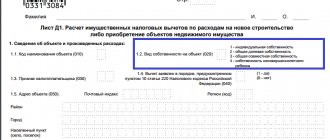- Property equivalent value.
- Cash (in nominal terms).
At the same time, the holder of this security has the right to receive interest on the face value.
The percentage here is determined by the coupon. By the way, income on such securities is usually divided into 2 parts:
- Coupon profit.
- The difference between redemption and acquisition (speculative).
By the way, there are many bonds on the market that are linked by interest rates to other indicators. This is called a floating interest rate. In this case, the bond rate may be tied to:
- Refinancing.
- Interbank trade, etc.
There are actually quite a lot of options here. Well, we must not forget that the issuer’s need for funds is precisely reflected in the essence of the bonds. After all, in essence, the issuer borrows money from bondholders. This is one of the most unpopular methods of obtaining funds among businesses. But states deal with bonds very closely. It is enough just to remember that by 1998 Russia had managed to funnel a huge amount of money into state bonds. We also know very well how it ended.
In general, the traditional design of bonds is similar to what we call lending. And yet there is a difference and it is significant.
In essence, the issuer, through the bond system, gets the opportunity to plan the volume of its costs. Bondholders have the opportunity to plan income. True, bonds must also be compared with loans in that they do not have the traditional properties of a loan. The fact is that there is no need to register collateral with bonds at all. Moreover, even the procedure for assigning rights to another creditor is simplified to the limit.
Let’s say right away that the bond market predominantly practices long-term investing. Because most securities in this area generally require an investment period of 10-15 years. And some even 30.
Types of bond coupons
By the way, in some ways bonds even resemble shares of companies. True, the difference here is significant. The fact is that bonds do not allow you to make any decisions in the company or enterprise. And you won’t be able to rely on property in the traditional sense of bonds either.
The problem is that bonds do not offer a dividend system. On the other hand, there is an acceptable alternative. After all, income on bonds can be received several times in 12 months. And at the end of the term, the face value of the bond will be paid back to you.
Moreover, bonds are much more reliable compared to classic securities. This is because failure to repay or repay will result in default. But in reality, defaults do not happen very often.
In fact, the current mechanism for working with bonds has a simple explanation for the average person. The point is that you provide the issuer with a certain amount in a transaction similar to a debt agreement. To certify this fact, bonds are issued. In this situation, the issuer acts as a borrower, and the bondholder becomes a lender.
This scheme stipulates the frequency of bond payments. Roughly speaking, you can be paid a portion of your income 2 or 3 times in 1 year. And this will continue until the bond expires. After expiration, you also receive the underlying value of that security. Naturally, classic bonds do not obligate you to anything. In general, after 5 years (conditionally) you can resell the bonds through the exchange (to anyone). Even if the security matures only in 10 years. It works quite simply, if you understand it properly.
Help No. 9, No. 7, No. 12
Help form 7.
Certificate Form 7 is a characteristic of a residential premises, which contains the technical characteristics of the premises, such as: footage, data on redevelopment, which is available in the passport service, information on defects in the premises and on the building as a whole. In fact, Form 7 certificate is a summary of information about the object from the technical passport - a document containing a detailed description of the parameters of the apartment.
Why do you need a Form 7 certificate?
Certificate Form 7 is required for real estate transactions, for example: to obtain a loan, to enter into a contract for the sale and purchase of an apartment or room, to register an inheritance, to present it to court, or upon divorce.
Validity period of the certificate in form 7.
The validity period of this certificate is not limited by law. However, many organizations involved in real estate transactions have the right to independently set their validity period; as a rule, it ranges from a week to a month.
What documents are needed to obtain Certificate 7?
Identification document (passport).
Where can I get a certificate on Form 7?
You can obtain a certificate of Form 7 from the Department of Settlement and Registration of Citizens (passport office) at your place of registration.
Addresses and telephone numbers of passport services:
Help in form 9.
Certificate Form 9 is a document that contains information about all persons registered in a residential premises who have the right to use this residential premises.
The Form 9 certificate indicates the full name of the owner of the property, then lists each person registered in this premises, their relationship with the owner of the property, date of birth, date of registration and type of registration of each of the people registered in this premises at the moment.
Certificate in Form 9 is a document necessary for the buyer; the information contained in it shows whether or not a citizen registered in a particular residential premises took part in privatization. A person registered but who did not take part in privatization, by law, retains a lifetime right to use this residential premises.
Validity period of the certificate in form 9.
The validity period of this certificate is not limited by law. However, many organizations involved in real estate transactions have the right to independently set their validity period; as a rule, it ranges from a week to a month.
What is the difference between a certificate in Form 9 and a certificate in Form 12?
A certificate in form 12 provides information about registered persons for the entire period of existence of a given residential premises. And the certificate in Form 9 reflects information about registered persons only for the period of residence of the owner.
This is interesting: Sample arrest report
What is indicated in the certificate on Form 12?
The certificate in Form 12 contains information about the deregistration of certain categories of persons who have the right to subsequently apply for residential premises. The certificate indicates whether deregistered minors, convicts, those in prison, persons serving in the army, those deregistered by proxy, etc. were registered in the apartment, if there were, in this case, the number of these persons and the date of their deregistration are indicated registered.
What documents are needed to obtain certificates 9 and 12?
Identification document (passport).
Where can I get a certificate on Form 9 and 12?
You can obtain certificates of forms 9 and 12 from the Department of Settlement and Registration of Citizens (passport office) at the place of your registration.
Basic terminology for working with bonds
Let's start with duration. This is a time period that reflects the actual payback. Roughly speaking, you invest money and wait for the invested funds to be returned to you. Duration is a clear indicator. The rules here are quite simple:
- Conservative bonds usually have medium duration.
- The lower the duration, the faster you will get your money back.
The redemption date is the date on which the issuing company typically returns the face value to you. In addition, the last coupon income is usually added to the moment of cancellation.
Naturally, oral agreements in such a matter are usually unacceptable. This means that some kind of agreement is needed. The offer is used in this capacity. It is not available for all securities. However, for the majority they still use it. In essence, in the offer the issuer sets its own rules:
- Possibility of resale of bonds.
- Procedure for early cancellation, etc.
A coupon is a user fee. Simply put, it is your interest on the issuer's use of funds. The coupon can be expressed in monetary terms or as a percentage. As for the market value of bonds, it determines the price of a particular security. By the way, this figure is purely a percentage. The price of a bond is determined by the parity of supply and demand (in the base). However, other factors may also influence the price of a security in the market.
Market value should not be confused with par value. They start from the nominal value, but it can be increased. For example, on the Moex exchange the nominal value is usually set at 1 thousand rubles. Those. It cannot be lower (in theory).
Well, the issuer is a specific enterprise or organization. And this is also done by individual regions, sometimes even entire states.

What is certificate form number 7, 9 and 12?

A certificate in Form 7 is required when registering real estate transactions, and is a condensed “passport9raquo; of the property: footage, data on redevelopment, information on construction and other characteristics of the residential premises.
This is interesting: Sample order for leave at your own expense
A certificate in Form 9, or a certificate of registration, contains information about the number of residents registered at the address: data on registration and deregistration.
How long are certificates f 7 and f 9 valid?
Legally, the validity period of certificates is not limited, but organizations involved in real estate transactions can independently set the validity period for certificates of forms 7 and 9, up to 1 month from the date of receipt.
In order not to delay in obtaining certificates in Form 7 (characteristics of living space) and certificates in Form 9 (certificate of registration), contact the Unified Document Center.
The Center's specialists will assist in obtaining it in just 3 working days.
Documents required to obtain certificates in form 7 and certificates in form 9 notarized power of attorney for an employee of the Help Desk (can be issued by a notary in the Unified Document Center) notarized power of attorney photocopy of the document certifying the identity of the document holder (first page and page with registration) original certificate of state registration of rights and title document, original or notarized copy of death certificate (if the certificate is issued for a deceased person)
Since January 2020, Form 9 certificates indicate not only permanent registration, but also temporary registration.
For citizens of the Russian Federation - according to the certificate of registration at the place of residence.
For foreign citizens - according to the temporary residence permit and notification of arrival in the presence of a FMS stamp on registration.
Form 7 - characteristics of the occupied living space
A certificate in Form 7 may be needed to complete a purchase and sale transaction or, for example, to register an inheritance. It contains the technical characteristics of the apartment:
footage of the premises, brief information about the building, comments about defects and redevelopments carried out (when the passport service is aware of this). In fact, certificate number seven is a “squeeze”; from the passport of the property, stored in the design and inventory bureau (or in the technical inventory bureau).
Form 7 can be obtained from the passport service (housing and maintenance organization) at the place of registration. However, people often turn to a “housing passport officer” for another reason – to obtain a certificate in Form 9.
Form 9 - certificate of registered citizens
When selling an apartment, it is advisable to request Form 9, like a number of other documents, from the seller in advance - even before making the deposit. Then you can avoid unpleasant surprises. This certificate does not have a legally established validity period; it only confirms information about the residents registered in the facility as of the date the document was issued. However, organizations that accept this form have the right to independently determine the permissible period of its validity (usually about a month). Therefore, it is better to issue certificate number nine closer to the day of signing the contract. In particularly problematic cases, this document can be obtained several times: before making an advance, before concluding an agreement and before the full transfer of money.
What is the difference between a certificate in Form 9 and a certificate in Form 12?
A certificate in form 12 provides information about registered persons for the entire period of existence of a given residential premises. And the certificate in Form 9 reflects information about registered persons only for the period of residence of the owner.
What is indicated in the certificate on Form 12?
The certificate in Form 12 contains information about the deregistration of certain categories of persons who have the right to subsequently apply for residential premises. The certificate indicates whether deregistered minors, convicts, those in prison, persons serving in the army, those deregistered by proxy, etc. were registered in the apartment, if there were, in this case, the number of these persons and the date of their deregistration are indicated registered.
Security type
Debt category obligations may be secured or unsecured. Yes, the classic scheme does not provide for collateral. However, there are a huge number of variations for such securities. Namely:
- Group of mortgages.
- Fund papers.
- Assets (physical).
Naturally, if the bonds are not secured, the risk increases. Typically, such bonds are issued on the condition that income will be received as a result of the implementation of a project. As for mortgages, credit contracts are very often used here (for example, for real estate). If borrowers repay, the issuer's solvency is confirmed.
Stock securities are pledged exclusively to those that the issuer currently owns.
Well, physical assets mean any valuable property. Trains, planes, real estate, etc.
Reliability criterion
This is an informal classification, however, in some places such terms are still used. Bonds based on reliability criteria are usually divided into:
- Bad.
- Good ones.
By bad (they are also called junk) we mean those securities that are issued by an unreliable issuer. Usually no one knows about this enterprise or organization. Well, good bonds (as you might guess) assume that the issuer is a reliable company or organization.
Profit accrual criterion
In modern conditions, there are many mechanics for paying income to bondholders. The most common of them are:
- Floating (reverse).
- Absent.
- Direct floating.
- Fixed.
In the first case, we assume that a special calculation for the bet is applied. If there is no rate, then nothing is currently being paid for the bond. These are so-called zero-coupon bonds. A direct floating payment scheme assumes that it changes in association with some significant indicator.
Well, the fixed payment mechanics assume that you will receive a set percentage for the bond. This is the most acceptable option for a beginner. Even if circumstances change, the interest rate will not change.
Redemption conditions criterion
Well, the last classification for today will be the basic terms of redemption. You need to understand that debt obligations are tied to Central Bank rates. If the interest rate is low, then the assets become profitable. Naturally, this generally applies to all market bonds. And here you need to understand one simple thing. In fact, everyone is at risk:
- Issuers.
- Bondholders.
Therefore, a mechanism is proposed by which the action of an obligation (debt) can be terminated ahead of schedule. This mechanism benefits everyone. Essentially, it allows you to build more flexible relationships between all parties to the transaction. Since such conditions are usually beneficial to the participants in the transaction, an additional opportunity arises. And on the basis of this mechanism, a separate classification of bonds appeared. Namely:
- Convertible papers.
- Review papers.
Convertible notes allow the current holder to convert a specified amount of the bonds into shares of the issuing company. In fact, it is a reinvestment system. As for callable securities, they open up opportunities for the issuer. After all, he can redeem his securities (debt) ahead of schedule. Moreover, if this happens, the holder also receives additional income in the form of a premium amount.

Types of bond coupons
There are 3 main types of coupons:
- Floating.
- Variable.
- Constant.
The rate for such a coupon is calculated based on a whole group of financial indicators. Typically, a direct relationship is made with the key rate of the regulator (in our case, the Central Bank of the Russian Federation). You need to understand that there are disadvantages to coupons of this type. Especially for those who have just begun to understand bonds. After all, predicting (correctly) future events and profitability is quite problematic.
On the other hand, floating coupons have a number of advantages. For example, the coupon rate usually always exceeds current inflation. Official inflation, of course.
Well, we must not forget that floating coupons are usually better in terms of yield than most deposits on the market.
A variable coupon implies that the issuer will be able to change the rate during the course of the play. Roughly speaking, everything here is in the hands of the company issuing the bonds.
And the key disadvantage here is the lack of forecasting. Because you most likely will not be able to guess the issuer’s decisions even with the help of a professional fortune teller. However, there is a positive aspect to this mechanics of replaying prices. The fact is that such bonds very quickly reflect the economic situation. We will finish with the classification of coupons at a constant category. Relatively speaking, in such conditions you will be able to receive money using coupons without any changes or shocks. The accumulation of coupon income here can be predicted, because everything is already known in advance.
In fact, with a permanent coupon, you always know how much you'll get and when. Permanent coupon bonds are more user-friendly and great for beginners. And this is also a good option for putting together a conservative portfolio.

where can I get a certificate (form 12)? where can I get a certificate (form 12)?
Even more complaints from realtors are caused by the quality of the certificate. “It comes to the point that in the lines for the same risk factors we see both “yes” and “no,” says Marianna Vereshchaga, General Director of the Advex Center. “Faced with the mention of certain unknown items, a potential buyer may refuse the transaction, although this “yes” may be a mistake.” In such cases, it may be worth either walking away from the deal or spending money on a quick check.
This is interesting: Notification of creditors about the liquidation of a legal entity sample
“Part of the difficulties in compiling certificates are due to the fact that some of the archival information of passport offices is stored on paper, and some on electronic media,” explains the chairman of the commission, vice-president of the ARSP Alexander Ginovker. But in general, Form 12, according to the meeting participants, has at least started to work. In any case, it is an official document that can be presented to confirm the rights of a bona fide buyer and seller.
How are coupons taxed?
This is where we need to figure it out thoroughly. Because in some situations, income from coupons actually fits the tax base. And in other situations you won’t have to pay anything. Let's start from the opposite. Based on Article 217 of the Tax Code of the Russian Federation, you will not have to pay taxes for:
- Securities of the Union State.
- Securities of individual regions of the Russian Federation.
- Interest on OFZ.
In addition, you will not have to pay for income through coupons that are associated with corporate bonds. True, it is still important to understand the emission criterion. The fact is that the rules apply only to those bonds that were issued before January 1, 2017.
If the deadline is missed, the tax base is established. In this case, the so-called “tax” on excess rates is applied. The problem is that it is equal to a share of 35 percent. Hardly anyone is delighted with such generosity from the state.
It is also necessary to take into account the rules for applying such a tax. Let's assume that you purchased a package of bonds with an income (at coupons) of 10 percent. And you purchased this bond for 50 units. It turns out that the yield is currently 20 percent. No tax is withheld for this.
However, if you purchased some debt security for 200, with a yield of 16 percent, despite the fact that in fact the yield is half that, then tax will be withheld from you. This is such a cunning system, and in many ways, quite strange.
At the same time, the procedure for withholding taxes has also been established. In particular, you should refer to the following articles:
- 214.9.
- 226.
If you don’t delve into government “twists” and speech patterns, it turns out that the tax agent is the company that pays the citizen money. In principle, there is nothing surprising in this. But here you need to understand the peculiarities of working with bonds.
In fact, after the bond is redeemed, the funds are sent to the depository. And from there the money is distributed to brokerage companies. And the broker is already engaged in the distribution of funds between clients.
It turns out that you won’t be able to withdraw funds from the depository to your personal account right away. And in the case of coupons, it is the depository that is regarded as a tax agent. For those who trade other securities, this may seem unusual, but these are the rules. In fact, it is the depository that will withhold all taxes at the enrollment stage.
But there are also workarounds. And they pose a danger to the holder. Because in certain situations the depository does not act as a tax agent. And also a brokerage company. In this case, the law places full responsibility for paying taxes on the recipient of the income.
In fact, brokerage companies have provided for this option as well. Typically, the benefits from coupons are released through brokerage accounts, which then allow you to withdraw money to a card or somewhere else.
Form 12 for an apartment, what is it?
Form 12 for an apartment is a certificate that contains information about “deregistration of certain categories of citizens.” Those. This certificate lists all citizens who may in the future lay claim to a registered apartment in the event of incapacity or death of its owner, that is, Form 12 is needed to distribute the apartment in the event that the deceased does not have a will. On the issue of housing issues, there are also certificates number 7 and 9. In contrast to these two information sources, a certificate of deregistration of certain categories of citizens speaks not only about how many people were registered in the apartment during the period of one owner (as form number 7). Form 12 for an apartment contains information affecting all residents of the housing plot who stayed in it during the entire existence of the apartment from the beginning of its construction until the demolition of the house itself. Unlike other papers, Form 12 does not legally have a deadline, that is, it does not require updating. Typically, the designation of the validity period is the building organization itself, which often sets the number behind the scenes and forever.
We recommend reading: Tax on the sale of a share in an apartment owned for less than 3 years









